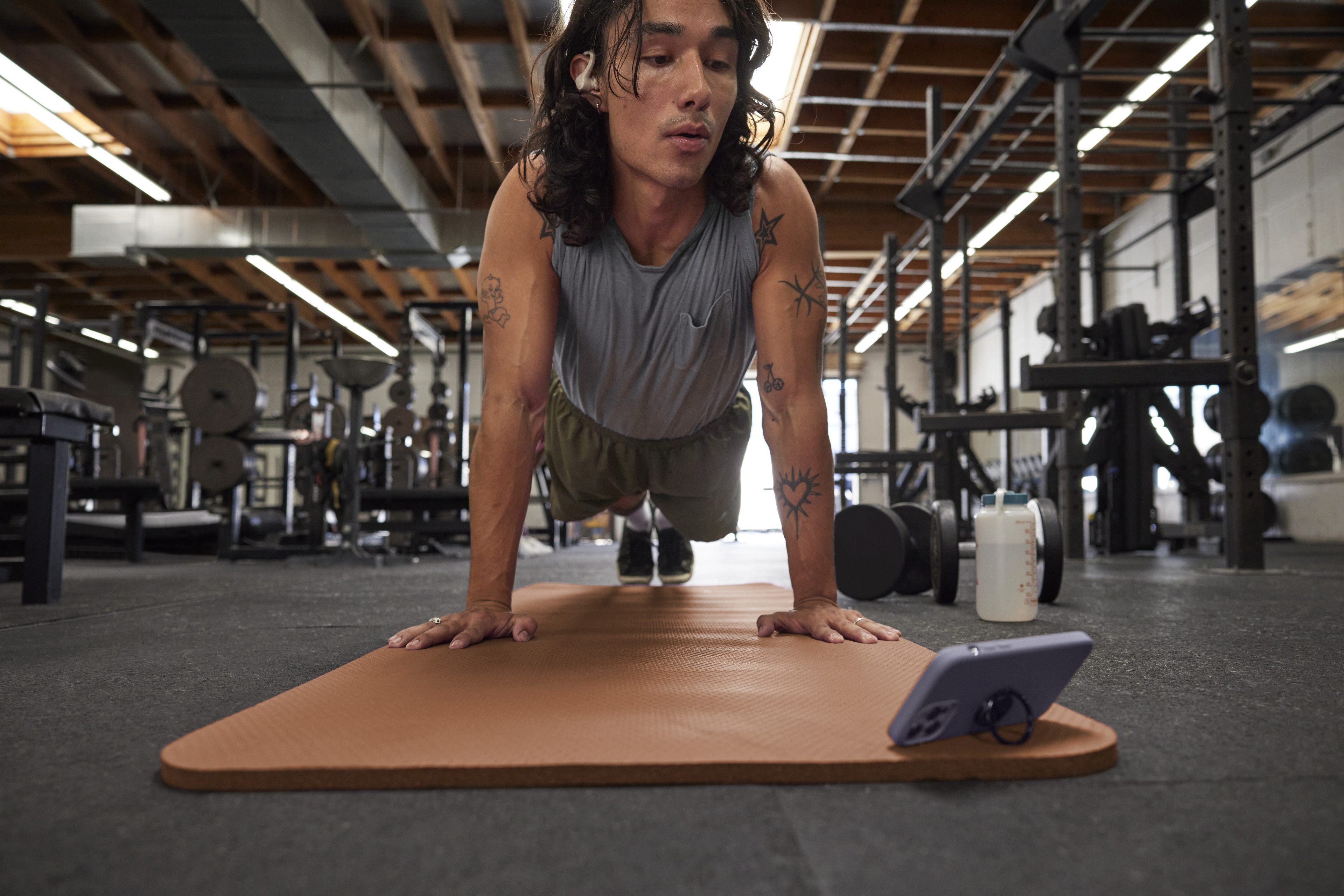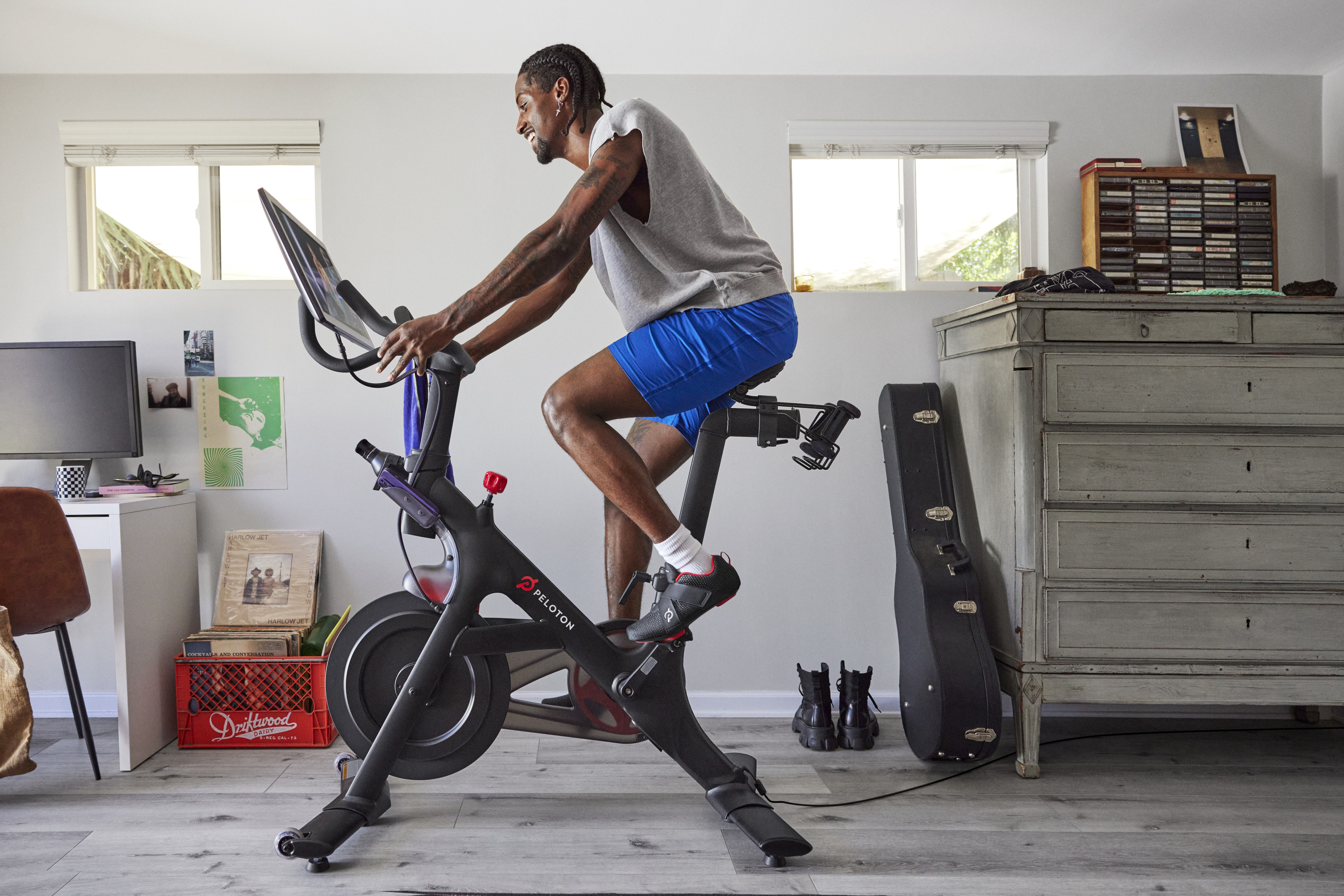
Peloton’s Ultimate Guide to Cross-Training
Specializing in the type of workout you love the most is great, but versatility in your exercise habits breeds even better results.
By Alyssa Sparacino•
What Is Cross-Training?
How Does Cross Training Differ from Strength Training
Why Is Cross-Training Important?
Tips for Effective Cross-Training
Best Cross-Training Exercises for Athletes
You may have heard the saying that to become a better runner, you have to, well, run. While it’s true that practice helps you progress, it leaves out important context: that to become a smarter, faster, safer runner you also have to do more than just run. That’s where cross-training comes in. Versatility in fitness is the key to injury prevention, efficient movement, and ultimately the edge over the competition, even if that’s just against yourself.
Discover more ways to reach your goals with Peloton
The same can be said for whatever your workout of choice may be, so whether you’re a cyclist, runner, or rower, choosing workouts that compliment your go-to method has long-term benefits you can’t ignore. Here’s everything you need to know about cross-training including why it’s so important and how to find the right cross-training workouts for you.
What Is Cross-Training?
Simply put, “cross-training is adding variety to your workout routine that will benefit your primary activity or overall fitness,” says Austin Cagley, director of global instructor development at Peloton. So, it’s more than just mixing it up to prevent burnout or boredom—cross-training proves that doing complementary workouts can improve your performance in other modalities, too.
For example, a sprinter needs strong glutes to help power every stride and quicken their pace, so strength training that targets the posterior chain can help. A cyclist may find that all that riding makes for tight hip flexors and a rounded upper back—yoga and Pilates can help with that! The advantages are endless, you just need to identify your potential deficits to target the cross-training workout that best suits your needs.
How Does Cross Training Differ from Strength Training
Think of cross-training as a way to improve overall performance, whereas strength training is used as a means to garner specific benefits.
Strength training, whether with dumbbells, resistance bands, or bodyweight exercises helps to build muscle strength, mass, or endurance, explains Cagley. Strength training can, and often is, particularly for cardio enthusiasts, a recommended type of cross-training, but not all cross-training includes strength work. Cross training can also include aerobic training for cardiovascular fitness or yoga for mobility for example, says Cagley.
Why Is Cross-Training Important?
“Cross training is an exceptional way to create a balanced workout,” says Cagley. You might know the power in combining strength training with cardio—that’s what boot camp classes are for right? Whether you’re training for a race or simply drawn to a certain style of workout, programming both styles of training into your schedule can be difficult. Cross-training can take the guesswork out.
The Benefits of Cross-Training
One of the best things about cross-training is that anyone can benefit from it—from swimmers to powerlifters and everyone in between.
Improves muscle imbalances
“It allows a great variety of opportunities to develop different muscles,” says Cagley. For example, running and cycling often recruit your quadriceps (the large muscle group in the front of your thigh), therefore routinely strengthening the anterior or front of your lower-body. But that leaves your posterior chain, notably your hamstrings, weakened. Cross-training helps even out this muscle imbalance to not just improve strength overall but also help prevent injuries from overcompensation of tight, overworked muscles.
Make fitness [more] fun
Cross-training also means you can add some spontaneity, diversity, and fun into your training—a huge bonus for those who are starting to get bored or hit the dreaded plateau with their results. Joyful activities such as hiking, surfing, or playing basketball that feel more like an adventure than a prescriptive workout also count as cross-training, adds Cagley.
Prevents overuse injuries
Creating this balanced workout will help prevent excess repetitive stress on certain areas of the body. “If you train the same way over an extended period of time, you open yourself up to the possibility of overuse on your muscles, tendons, joints,” says Cagley. “Once you create variety in your workouts, you limit possible injuries.”
Improves overall fitness
“By strength training, you can help develop muscles and strength,” for example, says Cagley. “If you add yoga into the mix, you can increase your mobility. You can add cycling, running, or anything aerobic to hit your cardiovascular system.” The options are endless, and cross-training allows you to bring the best of all these benefits together for an overall healthier you.

Tips for Effective Cross-Training
Get specific
Think about what your primary sport may be, or if you have a particular training style you’d like to become better at. Then tailor your cross-training to the muscles needed in those activities, says Cagley. “If you can help develop specific muscle groups, you can enhance our ability to perform other forms of exercise,” he says “With rowing, developing the muscles for a strong drive motion will benefit rowing more than swimming, as an example.”
Start slow
Begin by adding one cross-training day to your typical weekly workout routine, being mindful to choose something that’s varied from your current workout style. “For instance, if you run, start with strength training the legs,” says Cagley. Then, after about a month of consistent cross-training, add a second day “that will work opposing muscle groups to your current activity to create balance,” he says. “For example, add some upper-body [exercises] to your running routine. If you lift already, add some cardio into the mix. If you’re a rower, utilize the gym for some chest and arms work.”
Switch up your cardio
“If you are a runner, add cycling or rowing into the mix,” says Cagley. “You can also find many Peloton HIIT cardio classes that will focus on your body weight and create a similar effect without a machine.”
Find inspiration in your friends
“A fun way to incorporate cross-training is to join friends or family that participate in a different style of training than you,” says Cagley. Not only will this make things more fun for you both, but having a buddy makes trying something new less intimidating.
Don’t feel boxed in
Cross training allows for variation in your routine. “If you are traveling and there isn't a Peloton Bike for you to use, running can help be a great replacement to continue your training while on the road,” says Cagley.
Best Cross-Training Exercises for Athletes
Ready to get started? Here are some great ways to incorporate cross-training into your workout routine no matter what your primary activity of choice may be.
Strength training
“If you don't already have strength training in your routine, I would substitute one of your workouts with a strength training day,” he says. “It doesn't have to be intense to start, but adding it will be widely beneficial regardless of the current activity you are already performing.” For example, developing the strength in your legs can increase your power and explosiveness, which can improve your rowing stroke.
Basketball
“Adding pickup basketball games can help your overall running performance,” he says. “Not only is it aerobic by constantly running up and down the court, but changes in speed can help develop your sprints.”
HIIT
Athletes who need agility to perform at their best—think pickleball and soccer—could benefit from “HIIT cycling classes to help develop changes in speed while continuing to maintain endurance for a game,” says Cagley.
Cycling
Runners will benefit greatly from utilizing cycling as an alternative cardio exercise. Cycling helps build and maintain endurance while also limiting the high, repetitive impact from running that can be hard on the joints like knees and hips, says Cagley.
Yoga
Yoga is universally beneficial. “Any sport can utilize yoga as a way to help recover from intense training days,” he says. Stability, core strength, and a resilient mindset are all added bonuses of yoga that can help make you a more well-rounded athlete.
Rowing
Swimmers might enjoy taking a rowing class as the sport engages similar muscle groups used in many swimming strokes, particularly in the legs and back, says Cagley. It’s a great solution for when you need to take your training out of the water.

Peloton App
Access thousands of classes with no equipment needed.
This content is for informational and educational purposes only and does not constitute individualized advice. It is not intended to replace professional medical evaluation, diagnosis, or treatment. Seek the advice of your physician for questions you may have regarding your health or a medical condition. If you are having a medical emergency, call your physician or 911 immediately.
Level up your inbox.
Subscribe for a weekly dose of fitness, plus the latest promos, launches, and events.
By providing your email address, you agree to receive marketing communications from Peloton.
For more about how we use your information, see our Privacy Policy.





